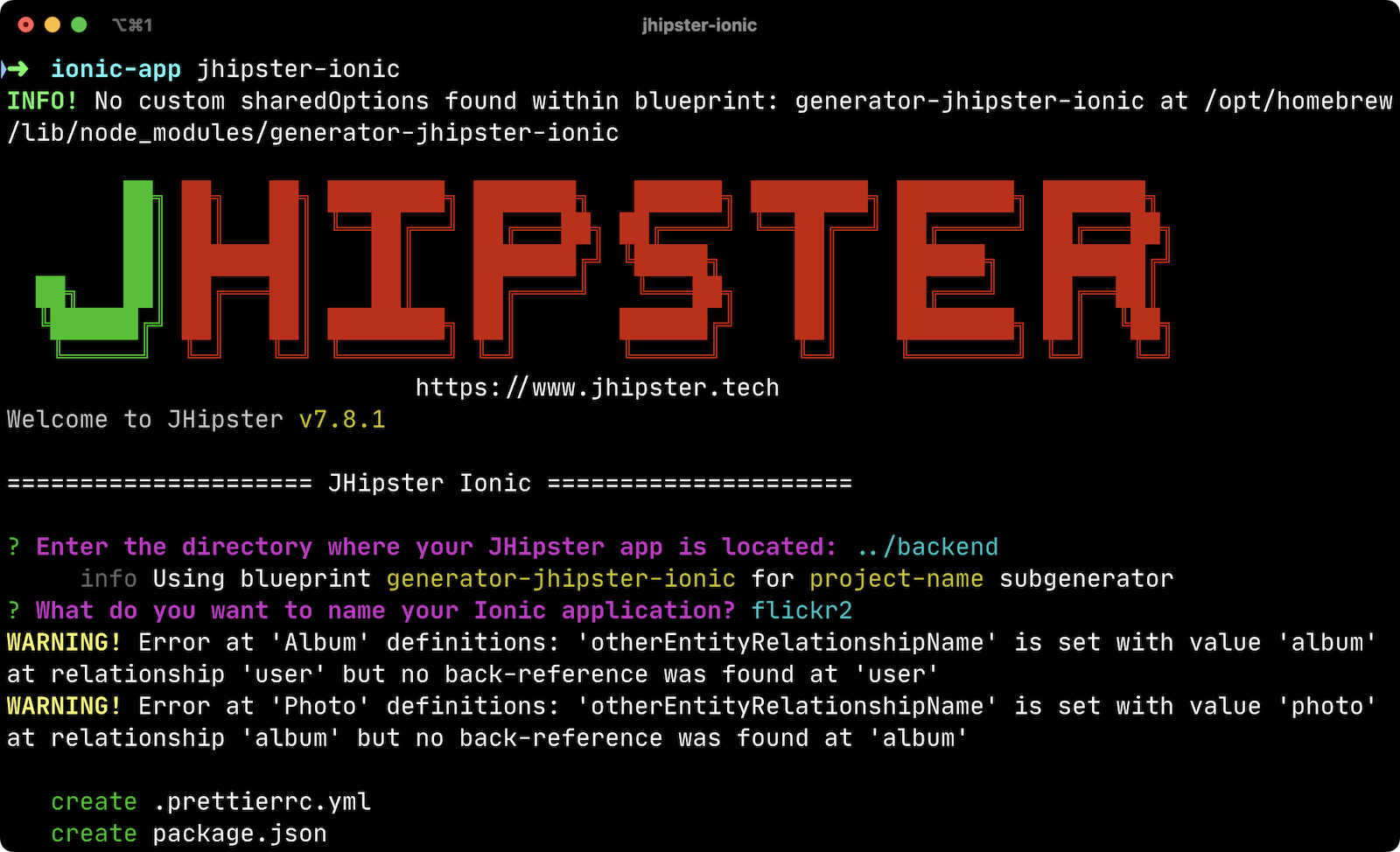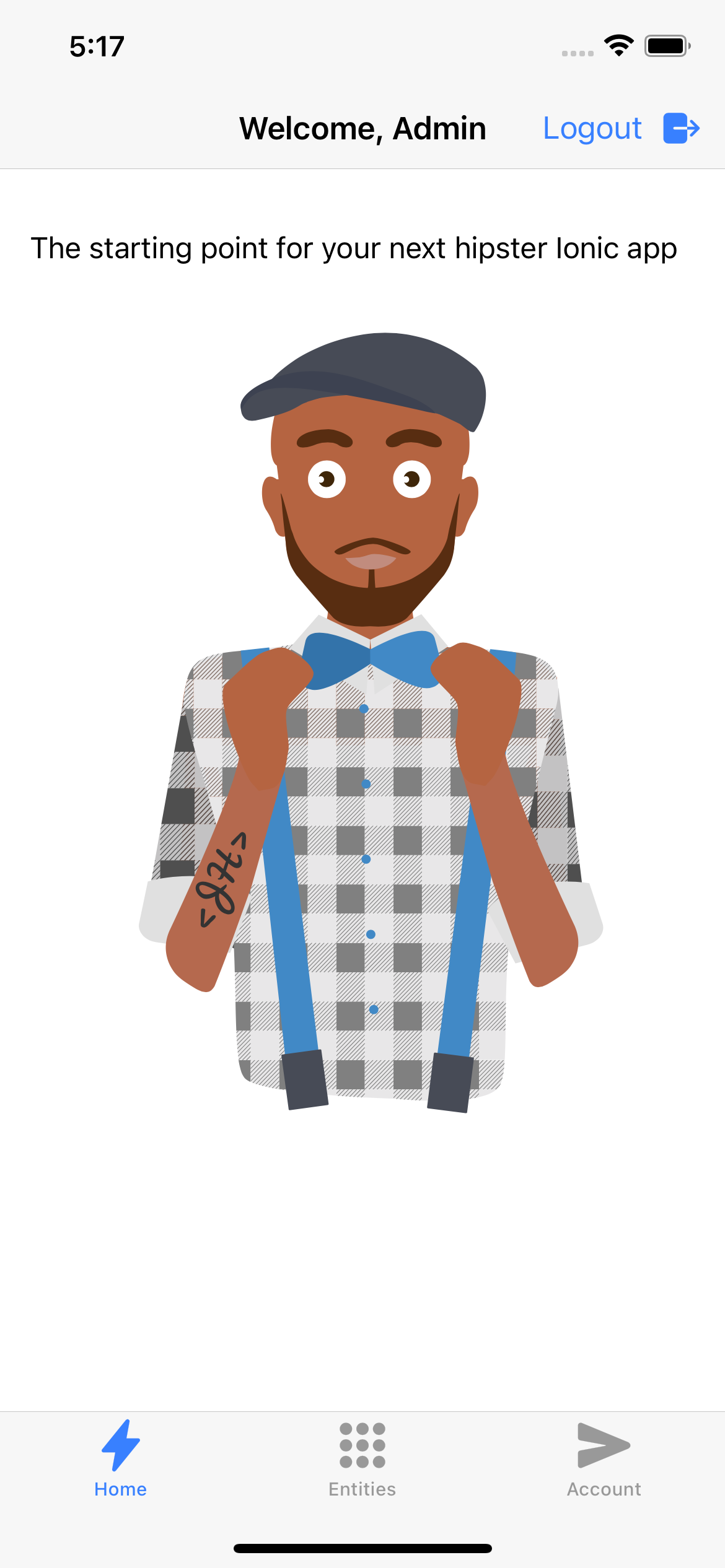Ionic is a framework for building mobile apps with web technologies that look and act like native apps. Because they’re built with web technologies (HTML, JavaScript, and CSS), you can also deploy your Ionic apps as single-page applications. Or, even better, as progressive web apps (PWAs) that work offline.
Ionic supports the big three web frameworks: Angular, React, and Vue. Once you’ve written your app, you can deploy it to a simulator or device with Capacitor. Capacitor (pictured as the blue layer) provides the runtime for your app to communicate with the native operating system and vice versa.

Ionic’s main competitors are native apps built with Swift or Objective-C (for iOS) and Java or Kotlin (for Android). Ionic also competes with React Native, which uses web technologies and translates them to native components.
The Ionic blog has a recent post that does a performance comparison between Ionic and React Native. TL;DR: Both options will give you a high-performance app with a truly native look and feel.
Prerequisites:
What the Heck Is JHipster?
This tutorial will show you how to use Ionic, Angular, and Capacitor to build a mobile app that talks to a Spring Boot backend. It won’t take but a few minutes, thanks to JHipster!
JHipster is an application generator that creates an Angular frontend and a Spring Boot backend based on the options you choose. It has the ability for you, as a developer, to customize what it generates with blueprints. The blueprints feature has resulted in many additional options for an app: Kotlin, Spring Native, Micronaut, Quarkus, .NET Core, NestJS, and Svelte.
Below is a diagram of the app you’ll create in this tutorial and its authentication flow.

✨ Introducing the JHipster Ionic Blueprint!
The JHipster project has supported generating an Ionic app using a
generator-jhipster-ionicMarcelo Shima volunteered to do the conversion, and after a couple of months, I’m proud to say the JHipster Ionic blueprint is now available!
Ionic for @JHipster v8 is now available! There's lots to love in this release:
💙 Now available as a blueprint
🧪 Migrated from Protractor to Cypress
⭐️ @Auth0 support
🅰️ Upgraded to Angular 13 and Ionic 6
✨ https://t.co/WQ6ZTsTkPP#ionic #jhipster #angular #springboot— Matt Raible (@mraible) May 10, 2022
Here’s how to use it:
Create an
ionic-app- backend - ionic-app
Navigate into
ionic-appjhipster-ionicnpm install -g generator-jhipster-ionic jhipster-ionic
You’ll be prompted for the location of your JHipster app, a name for your Ionic app, and then you’ll be off to the races!

You can also create a JHipster app and an Ionic app simultaneously by using the bundled JHipster.
mkdir bug-tracker && cd bug-tracker jhipster-ionic jdl bug-tracker.jh cd ../ionic4j
This process will follow the same convention where the generated backend and frontend apps are side-by-side on your hard drive.
Then you can run both apps from your Ionic app using easy-to-remember commands.
npm run backend:start # open a new terminal window npm start

Build a Mobile App with Ionic and Angular
To see Ionic + JHipster in action, let’s start with a Full Stack Java + React app I created for the Auth0 blog. I updated the app to the latest version of JHipster (v7.8.1) and created an Ionic app with JHipster Ionic, so everything is guaranteed to work. This Flickr clone allows you to upload photos, tag them, and organize them into albums. First, clone the example:
git clone https://github.com/oktadev/okta-jhipster-ionic-example.git \ jhipster-ionic --depth 1 cd jhipster-ionic/backend
Start the app:
npm run ci:e2e:prepare # starts Keycloak and PostgreSQL in Docker ./mvnw
Then, navigate to
http://localhost:8080admin/adminOpen a new terminal window and enter the
jhipster-ionic/ionic-appnpm startnpm install npm start
You should be able to sign in and add a new photo.
 |  |
 |  |
Please keep reading to learn how JHipster made all of this possible. Or, skip ahead to run your Ionic app on iOS using Capacitor.
How to Integrate Ionic and Spring Boot
JHipster makes it easy to create a Spring Boot API that Spring Security protects. The JHipster Ionic blueprint generates an Ionic client that talks to your Spring Boot API and understands its auth mechanism. I created the
jhipster-ionicInstall the JHipster Ionic blueprint:
npm i -g generator-jhipster-ionic@8.0.0
Create a parent directory to hold everything:
# take is a shortcut for mdkir && cd take jhipster-ionic
Clone an existing JHipster Flickr example:
git clone https://github.com/oktadev/auth0-full-stack-java-example.git backend --depth 1
Create a new directory to hold your Ionic project, then run
jhipster-ionictake ionic-app jhipster-ionic
Provide the path to your backend JHipster app and name your app
flickr2
That’s it! The blueprint will generate an Ionic client, complete with screens for editing entities, unit tests, and end-to-end tests with Cypress.
Pretty slick, don’t you think?! 😎
Run your Spring Boot API
You’ll need to start your backend first, so your Ionic app can talk to its API. First, start Keycloak and PostgreSQL in Docker containers:
cd backend npm run ci:e2e:prepare # starts Keycloak and PostgreSQL in Docker
Next, update
backend/src/main/resources/config/application-prod.ymlhttp://localhost:8100jhipster: ... cors: allowed-origins: 'http://localhost:8100' allowed-methods: '*' allowed-headers: '*' exposed-headers: 'Authorization,Link,X-Total-Count,X-${jhipster.clientApp.name}-alert,X-${jhipster.clientApp.name}-error,X-${jhipster.clientApp.name}-params' allow-credentials: true max-age: 1800
Then, start the backend app using
./mvnw -Pprodhttp://localhost:8080admin/admin
Run your Ionic app
Open another terminal and navigate to the
ionic-appnpm starthttp://localhost:8100
You should be able to log in with Keycloak and see all the listed entities in your app.

In the JHipster app’s tutorial, there’s a section where you’re instructed to remove photo fields that can be calculated. Specifically, height, width, date taken, and date uploaded. These values are calculated when the photos are uploaded, so there’s no reason to display them when adding a photo.
To add this same functionality to your Ionic app, modify
src/app/pages/entities/photo/photo-update.htmldiv *ngIf="!isNew"><div *ngIf="!isNew"> <ion-item> <ion-label position="floating">Height</ion-label> <ion-input type="number" name="height" formControlName="height"></ion-input> </ion-item> ... <ion-item> <ion-label>Uploaded</ion-label> <ion-datetime displayFormat="MM/DD/YYYY HH:mm" formControlName="uploaded" id="field_uploaded"></ion-datetime> </ion-item> </div>
The Ionic CLI will auto-compile and reload the app in your browser when you save this file. You can prove everything works as expected by stopping your app (with Ctrl+C) and running all the end-to-end tests with Cypress.
npm run e2e
Run Your Ionic App on iOS Using Capacitor
Generate a native iOS project with the following commands:
npx ionic build npx ionic capacitor add ios
Add your custom scheme (
dev.localhost.ionicios/App/App/Info.plistsrc/environments/environment.ts<key>CFBundleURLTypes</key> <array> <dict> <key>CFBundleURLName</key> <string>com.getcapacitor.capacitor</string> <key>CFBundleURLSchemes</key> <array> <string>capacitor</string> <string>dev.localhost.ionic</string> </array> </dict> </array>
Modify the JHipster app’s CORS settings (in
backend/src/main/resources/config/application-prod.ymlcapacitor://localhostjhipster: ... cors: allowed-origins: 'http://localhost:8100,capacitor://localhost'
Restart your backend app. Deploy your Ionic app to iOS Simulator and run it.
npx cap run ios
Confirm you can log in and rejoice in your success!

Run Your Ionic App on Android
Generate an Android project with Capacitor.
npx ionic capacitor add android
Enable clear text traffic and add
dev.localhost.ionicandroid/app/src/main/AndroidManifest.xml<activity ... android:usesCleartextTraffic="true"> <!-- You'll need to add this intent filter so redirects work --> <intent-filter> <action android:name="android.intent.action.VIEW" /> <category android:name="android.intent.category.DEFAULT" /> <category android:name="android.intent.category.BROWSABLE" /> <data android:scheme="dev.localhost.ionic" /> <!--data android:scheme="com.okta.dev-133337" /--> </intent-filter> <intent-filter> <action android:name="android.intent.action.MAIN" /> <category android:name="android.intent.category.LAUNCHER" /> </intent-filter> </activity>
Modify the JHipster app’s CORS settings to allow
http://localhostjhipster: ... cors: allowed-origins: 'http://localhost:8100,capacitor://localhost,http://localhost'
Restart your backend app and run your Ionic app on Android using the Capacitor CLI:
npx cap run android
You’ll need to run a couple of commands to allow the emulator to communicate with JHipster and Keycloak.
adb reverse tcp:8080 tcp:8080 adb reverse tcp:9080 tcp:9080
You should be able to log in and edit entities, just like you can in a browser and on iOS!

Why Use OpenID Connect for Mobile Apps?
Storing API keys and secrets in mobile apps is not safe. OAuth 2.0 solves this problem by not shipping any secrets in mobile apps and instead involving the user in the process of getting an access token into the app. These access tokens are unique per user, and they’re updated every time the user logs in. The PKCE extension provides a solution for securely doing the OAuth flow on a mobile app even when there is no pre-provisioned secret.
If you need to access an API from a mobile app, hopefully, it supports OAuth and PKCE! Thankfully most of the hard work of PKCE is handled by SDKs like AppAuth, so you don’t have to write all that code yourself. If you’re working with an API like Okta, then Okta’s SDKs do PKCE automatically, so you don’t have to worry about it. The JHipster Ionic blueprint uses Ionic AppAuth.
The previous sections showed you how to use Keycloak as your identity provider. If you’re deploying to production, you might not want to manage your users and authentication system. That’s where Okta and Auth0 can help!
Switch your identity provider to Okta
If you don’t have an Okta developer account, you can sign up for one or run
okta registerIf you want to change your JHipster app to use Okta, the Okta CLI makes this as easy as
okta apps create jhipster.okta.envsource .okta.env ./mvnw -Pprod
With Keycloak, you don’t need a separate OIDC app for Ionic. With Okta, you do. See JHipster’s documentation to learn how to create a native app for Ionic on Okta.
After you’ve changed the client ID in your Ionic app, run it using
npm starthttp://localhost:8100Switch your identity provider to Auth0
To switch your identity provider to Auth0, you first need an Auth0 account. Then, create a
.auth0.envNext, configure a native app for Ionic on Auth0. Once you’re finished updating your Ionic app with a new client ID and audience, you should be able to run your backend and new frontend client using the following commands:
source .auth0.env npm run backend:start # open a new terminal npm start
To see it in action on your mobile emulators, use the following commands:
npm run build # iOS npx cap run ios # Android npx cap run android
Learn More about Ionic, Spring Boot, and JHipster
I hope you’ve enjoyed learning about Ionic and the new Ionic blueprint for JHipster. In my opinion, it’s pretty neat that you can rapidly prototype a mobile client for your JHipster. It’s even better that you can use a leading-edge mobile application framework to do it.
You can find the source code for this example on GitHub, in the @oktadev/okta-jhipster-ionic-example repository.
If you liked this post, you might like these others too.
- Full Stack Java with React, Spring Boot, and JHipster
- Ionic + Sign in with Apple and Google
- Build Mobile Apps with Angular, Ionic 4, and Spring Boot
- How to Docker with Spring Boot
- A Quick Guide to Elasticsearch with Spring Data and Spring Boot
If you have any questions, please leave a comment below. You can follow @oktadev on Twitter and subscribe to our YouTube channel for more leading-edge content. We’re also on LinkedIn and Facebook.
About the author

Matt Raible
Developer Advocate
